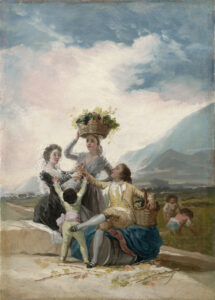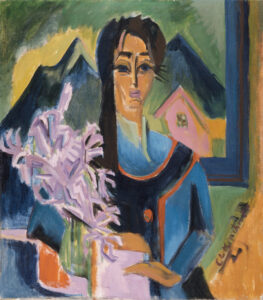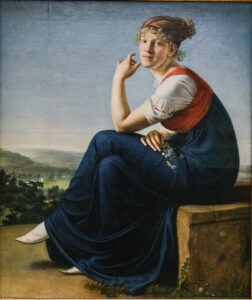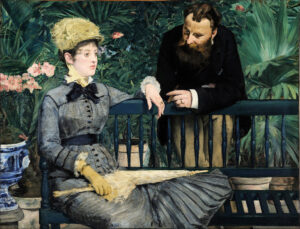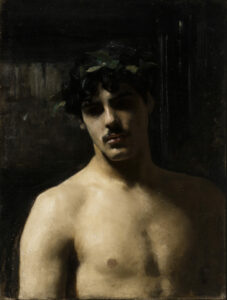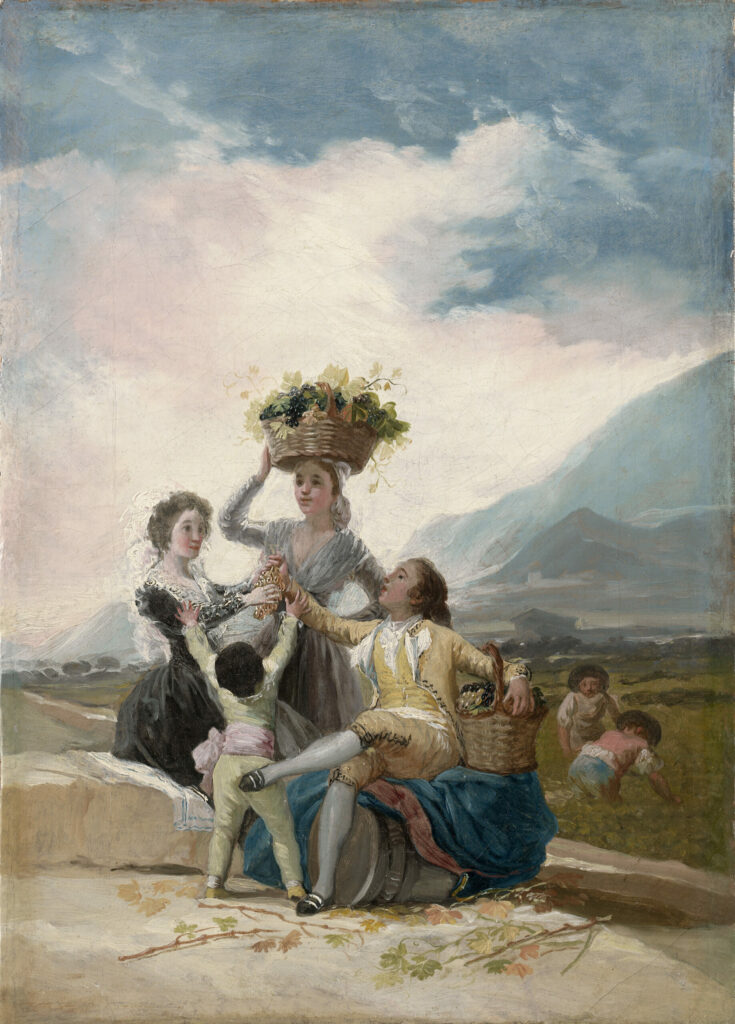
Madrid, 1786. King Charles III commissioned Goya to create cheerful scenes to adorn his palace of El Pardo. The painter represents autumn here, the season of grape harvests and bountiful crops. On this small preparatory canvas, he composes a gallant scene where nature and aristocracy meet.
A Scene of Rural Seduction
An elegant young man, dressed in a satiny yellow suit, offers a bunch of grapes to a lady in black. A child reaches toward the fruit, creating a triangle of graceful gestures. Behind them, a peasant woman dressed in gray carries a basket overflowing with grapes on her head. She embodies Autumn itself. Goya uses warm tones for the clothing and autumnal colors for the vine shoots scattered on the ground. His touch remains light, almost sketched, suited to this study.
The Art of Pleasing Power
This work responds to a specific commission: the king wanted “pleasant and lighthearted subjects” to decorate his dining room. Goya must therefore celebrate the simple pleasures of life. The four seasons traditionally adorned royal residences, symbolizing the harmony between nature and civilization. This tapestry was part of a decorative ensemble illustrating the annual cycle. The painter skillfully blends rural realism with idealization, creating a romanticized vision of the countryside.
Francisco de Goya, Painter to the King
Goya (1746-1828) was still working in 1786 as a cartoon designer for the royal tapestry manufacture, before becoming court painter. This commercial work shaped his sense of composition and his observation of social types. Later, his style would evolve toward dark and critical works, far removed from these pleasant scenes.
Think about it
💭 How did the painter of this luminous rural scene become the creator of the dark Black Paintings at the Prado Museum (Madrid)?
About this work
- Autumn
- Francisco de Goya y Lucientes
- 1786
- Oil on canvas
- 34 × 24.3 cm
- Clark Art Institute, Williamstown
- https://www.clarkart.edu/ArtPiece/Detail/Autumn

